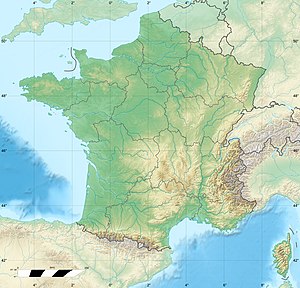Our website is made possible by displaying online advertisements to our visitors.
Please consider supporting us by disabling your ad blocker.
Battle of Paris (1814)
This article needs additional citations for verification. (March 2014) |
| Battle of Paris | |||||||||
|---|---|---|---|---|---|---|---|---|---|
| Part of the Campaign of France of the Sixth Coalition | |||||||||
 The Barrier of Clichy. Defence of Paris, 30 March 1814 by Horace Vernet. In the centre, Marshal Moncey gives his orders to goldsmith Jean-Baptiste Odiot, colonel of the National Guard, for whom the painting was made. | |||||||||
| |||||||||
| Belligerents | |||||||||
|
|
| ||||||||
| Commanders and leaders | |||||||||
|
|
| ||||||||
| Strength | |||||||||
| 29,000–42,000[1] |
Russia: 100,000 Austria: 15,000 Prussia: 40,000 Total: 100,000[1]–155,000 | ||||||||
| Casualties and losses | |||||||||
| 5,000–9,300[1] killed, wounded or captured | 9,000[1]–18,000 killed, wounded or captured | ||||||||
Location within France | |||||||||
current battle
Napoleon in command
Napoleon not in command



The Battle of Paris (or the Storming of Paris[2]) was fought on 30–31 March 1814 between the Sixth Coalition, consisting of Russia, Austria, and Prussia, and the French Empire. After a day of fighting in the suburbs of Paris, the French surrendered on 31 March, ending the War of the Sixth Coalition and forcing Emperor Napoleon to abdicate and go into exile.
- ^ a b c d e Bodart 1908, p. 480.
- ^ Velichko et al. 1912.
Previous Page Next Page




